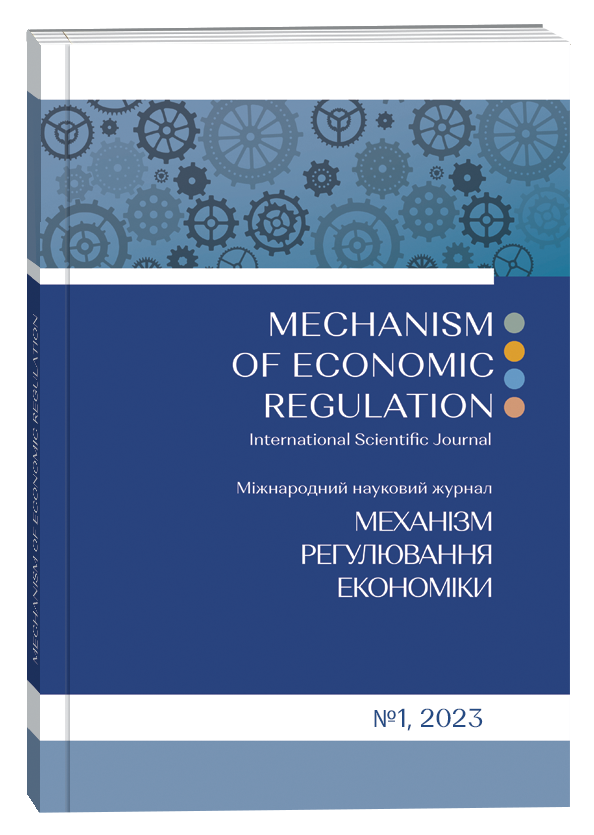COMPARISON OF RURAL POPULATION BURDEN BETWEEN CHINA AND UKRAINE
Abstract
In order to deeply understand the burden of rural population in China and Ukraine, adjust the structure of rural human resources and better promote the effective implementation of rural human resources management in both countries. This study reviewed the China Statistical Yearbook and the Ukraine Demographic Yearbook to measure the rural population burden in China and Ukraine in terms of three indicators: rural population size, natural population growth rate, and population migration rate, using 2011-2020 as the time period. The results show that both China and Ukraine are facing serious population burden, but the manifestations of population burden are completely different. China's rural population burden is characterized by overpopulation, which is manifested as a large number of rural population, a high birth rate and a large surplus rural labor force. The rural population burden of Ukraine is characterized by insufficient population, which is manifested by low natural growth rate of population and natural growth rate of immigration, more and more rural population moving out of the countryside, and continuous negative growth of rural population.On the basis of this, two suggestions are put forward. On the one hand, China should pay attention to improving the carrying capacity of rural population, strengthen the primary industry, develop the tertiary industry, improve the ability of rural residents to start their own businesses, and reduce the surplus rural labor force as far as possible. On the other hand, Ukraine should adjust its population policy, take various measures to encourage birth and strive to increase the birth rate.At the same time, the income level and employment rate of the rural population should be increased, social welfare security should be strengthened, and the attractiveness of rural areas should be enhanced to balance the social pressure brought by the shortage of rural labor force.This study is of great significance for relieving the pressure of rural population, optimizing the structure of rural human resources and improving the management level of rural human resources in both countries.
References
Li, T.P. (2004). A quantitative study of population pressure in China. Population Journal, (01). P. 17–23. DOI: https://doi.org/10.16405/j.cnki.1004-129x.2004.01.003.
Zhao, C.Y. (2014). Empirical analysis of population burden coefficient and economic growth in Henan Province. Journal of Shaoguan University, 35(01). P. 107-110.
Huang, T.Y., Li, N., &Yan, S. (2022). Development of non-agricultural industries, population pressure and land rent Rate in Modern times: An investigation based on rural survey in Modern Times. Economics (quarterly), 22 (4). P. 1343-1360. DOI: https://doi.org/10.13821/j.cnki.ceq.2022.04.12.
Huang, H.H.(2016)Study on the change of population pressure in Wuhan city circle before and after the construction of two types of society. Journal of Huazhong Normal University (Natural Science Edition), 50(03). P. 443–448. DOI: https://doi.org/10.19603/j.cnki.1000-1190.2016.03.022.
Yu, W.J., & Sui, F.M. (2022). Absolute and relative population pressure: Breakthroughs and limitations in the survival and development of rural households in Wuxi in the 1920s and 1930s. Agricultural History of China, 41(04). P. 96–108.
Li,K., & Zhong,S.Y. (2010). Labor force dependency burden and residential consumption rate - A dynamic panel empirical study based on the demographic dividend period. Economic Review, (06). P. 105–112. DOI: https://doi.org/10.19361/j.er.2010.06.013.
Zhang, Q., & Bai, C.E. (2011). Dependency burden, resident health and economic growth - Demographic characteristics factors affecting economic development of counties and cities in China. Financial Research, 37(07). P. 17–27. DOI: https://doi.org/10.16538/j.cnki.jfe.2011.07.002.
Zhao, J., Tian.Y., & Zhang. Y.W. (2009). Evaluation indicators and quantitative evaluation of population pressure in Gansu Province. Northwest Population, 30(05). P. 111–113.
Wang,T., & He. P.F. (2017). Measurement of urban population pressure coefficient and its influencing factors in China. Population and Economics (06). P. 20–31.


